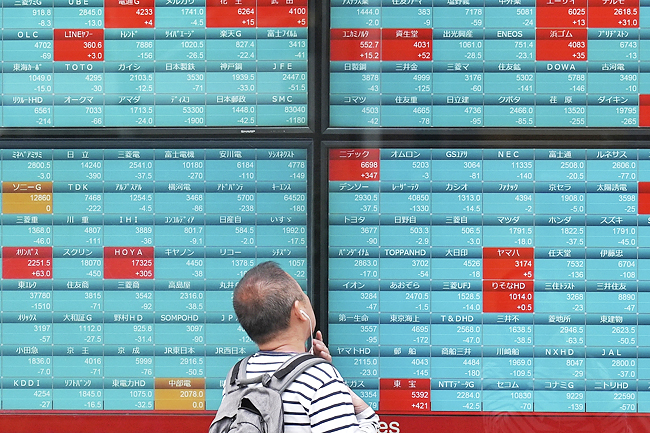AP – Asian shares advanced yesterday even after sinking technology stocks sent Wall Street lower in the S&P 500’s worse losing streak since the start of the year.
United States (US) futures were lower, while oil prices gained.
Tokyo’s Nikkei 225 climbed 0.3 per cent to 38,090.87 and the Hang Seng in Hong Kong gained 1.5 per cent to 16,489.59.
The Shanghai Composite index added 0.6 per cent to 3,089.93.
South Korea’s Kospi led the region’s gains, surging 1.8 per cent to 2,631.15.
In Australia, the S&P/ASX 500 rose 0.6 per cent to 7,651.30.
On Wednesday, the S&P 500 lost 0.6 per cent, to 5,022.21. It’s down 4.4 per cent since setting a record late last month.

The Dow Jones Industrial Average slipped 0.1 per cent to 37,753.31, and the Nasdaq composite sank 1.1 per cent to 15,683.37.
Tech stocks slumped after ASML, a Dutch company that’s a major supplier to the semiconductor industry, reported weaker orders for the start of 2024 than analysts expected. Its stock trading in the US slumped 7.1 per cent.
Nvidia dropped 3.9 per cent, and Broadcom sank 3.5 per cent to serve as the two heaviest weights on the S&P 500.
The weakness for tech overshadowed stronger-than-expected profit reports from some big companies, including United Airlines. It soared 17.4 per cent after reporting stronger results for the start of the year than analysts expected, lifted by strong demand from business fliers.
Sharp tumbles for oil prices lessened investors’ worries about inflation, which in turn helped Treasury yields ease. The 10-year Treasury yield sank to 4.58 per cent from 4.67 per cent late Tuesday. The two-year yield, which moves more closely with expectations for the Fed, fell to 4.92 per cent from 4.99 per cent.
Yields on Tuesday had returned to where they were in November after top officials at the Federal Reserve suggested the central bank may hold its main interest steady for a while.
It wants to get more confidence that inflation is sustainably heading toward its target of two per cent. Its main interest rate has been sitting at its highest level since 2001.
High interest rates hurt prices for investments and increase the risk of a recession, but Fed officials are concerned after a string of reports this year has shown inflation remaining hotter than forecast.






